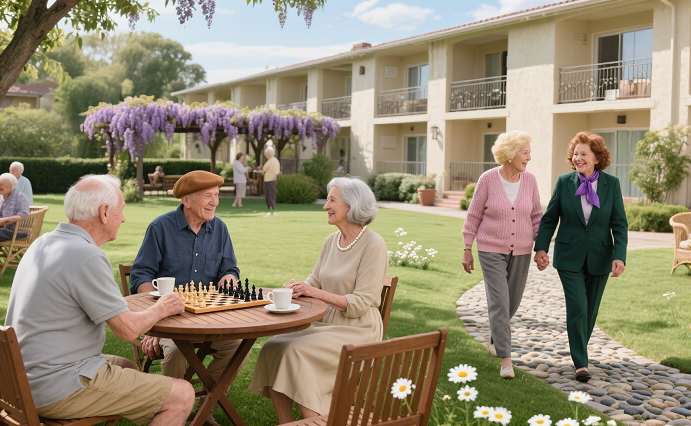Understanding the Different Types of Senior Living Facilities
Deciding to move yourself or a loved one into a senior living community is never easy. The options can be overwhelming, and each type offers different levels of care and support. This guide explains the main types of senior living arrangements and what each one provides.

Types of Senior Living:
-Independent Living
-Assisted Living
-Personal Care
-Nursing Homes / Skilled Nursing
-Continuing Care Retirement Communities (CCRCs)
-Active Adult Communities
Independent Living
Independent living is designed for older adults who are able to care for themselves but want to enjoy a maintenance-free lifestyle. These communities rent out apartments or houses, and the monthly fee typically covers repairs, home maintenance, and often housekeeping, laundry, and daily meals.
Amenities may include:
-Fitness center
-Game room
-Activity lounge
-Beauty/barber shop
-Organized activities and outings
This option is best for active seniors who want convenience and community without the burdens of homeownership.
Assisted Living
Assisted living combines the amenities of independent living with personal support for everyday activities, such as:
-Bathing
-Dressing
-Using the bathroom
-Meal preparation
-Transportation
While not a substitute for a nursing home, many assisted living communities offer medication management, access to nurses, and onsite therapy services (physical, occupational, or speech). Residents typically live in private apartments and receive help when needed.
It's a good fit for seniors who don't require intensive medical care but need assistance with activities of daily living (ADLs). For families unable to provide constant support, assisted living can bridge the gap.
Personal Care
Personal care facilities focus on daily living support—meals, housekeeping, laundry, personal hygiene, and medication reminders—while offering activities and transportation for appointments or errands.
In some states, personal care and assisted living are licensed identically. In others, like Pennsylvania, they are regulated separately. The main difference: assisted living includes certain medical services, while personal care does not.
Nursing Homes / Skilled Nursing
Nursing homes, also called skilled nursing facilities, provide around-the-clock medical care delivered by doctors, nurses, and licensed therapists. Residents also receive help with bathing, dressing, feeding, and other daily needs.
They can be used for:
-Long-term care for chronic conditions
-Short-term rehabilitation after surgery, illness, or injury
-Common reasons for admission include serious illness, mobility challenges, sensory impairments, dementia, Alzheimer’s disease, or recovery after hospitalization.
Continuing Care Retirement Communities (CCRCs)
CCRCs offer a long-term living arrangement where residents move in while still healthy and independent, then transition to higher levels of care within the same community as needs change.
Key features:
-Large entrance fee (from tens of thousands to millions of dollars) plus monthly fees
-A single contract covers housing, amenities, and future care needs
-Residents stay in one community for life, simply moving between levels of care as necessary
The main drawback is the high upfront cost, which can be a barrier for some families.
Active Adult Communities (55+ Communities)
Active adult communities are residential neighborhoods for adults—usually aged 55 and older—who are healthy and independent. Residents rent or own their homes and often pay HOA fees covering exterior maintenance.
Unlike independent living, these communities don’t offer meals, housekeeping, or personal care. They do, however, provide amenities such as:
-Swimming pools
-Fitness centers
-Golf courses
This lifestyle is ideal for active retirees seeking a social, low-maintenance environment.
Choosing the Right Senior Living Option
The right choice depends on current and future needs:
-Independent Living – Best for self-sufficient seniors wanting convenience and community
-Personal Care / Assisted Living – For those needing help with daily tasks but not full-time medical care
-Skilled Nursing – For seniors with significant, ongoing medical needs
When evaluating facilities, ask:
-What happens if care needs increase?
-Is a higher level of care available onsite?
-Will they help arrange in-home care if necessary?




